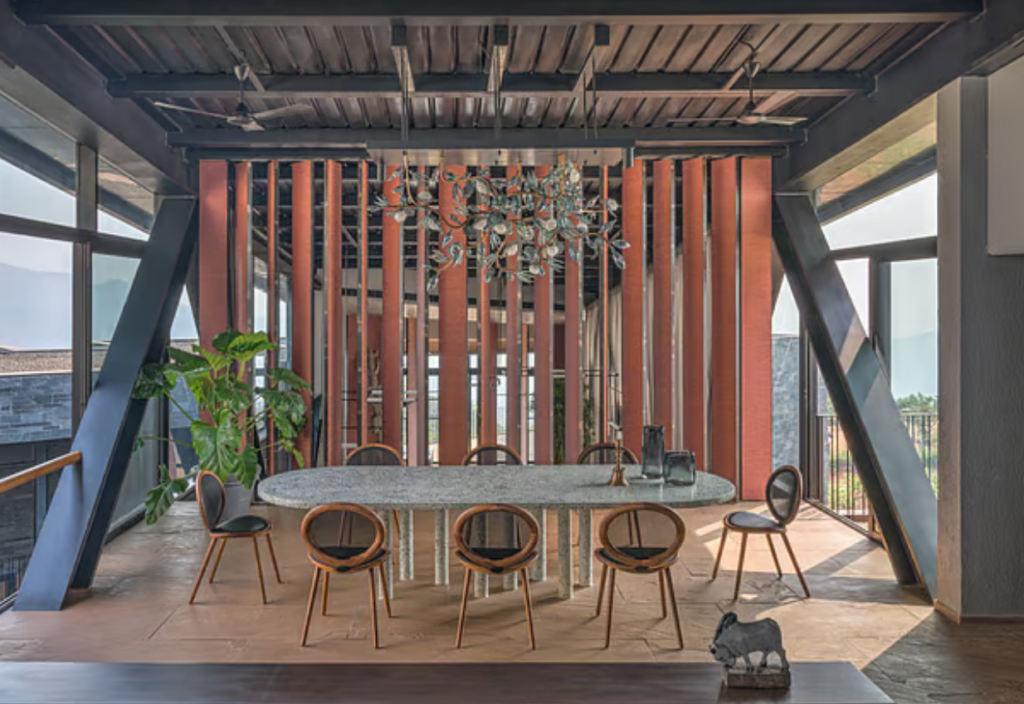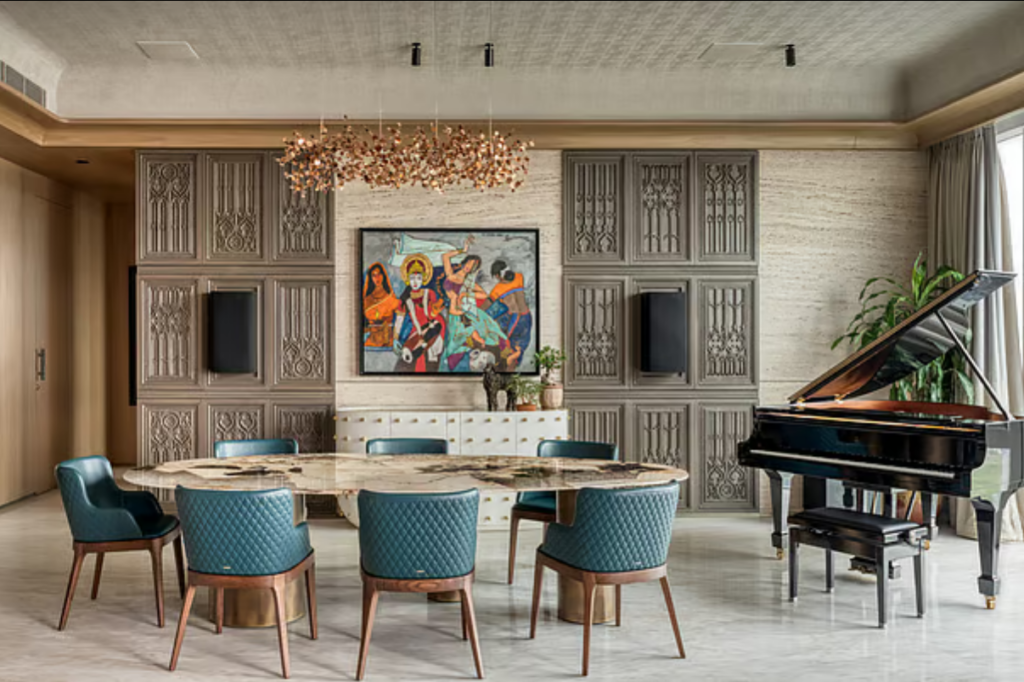 When Apoorva Shroff was a child, her mother, a banker, told her about a client of hers who would send the architects in his building firm around the world. The architects’ mission was to be inspired by the beautiful buildings they saw and to replicate them in India. The best part of the job? The architects could keep the penthouses of the buildings they made for themselves. When Shroff heard this, she was sold. “The greed for a penthouse made me an architect,” she says.
When Apoorva Shroff was a child, her mother, a banker, told her about a client of hers who would send the architects in his building firm around the world. The architects’ mission was to be inspired by the beautiful buildings they saw and to replicate them in India. The best part of the job? The architects could keep the penthouses of the buildings they made for themselves. When Shroff heard this, she was sold. “The greed for a penthouse made me an architect,” she says.
 Now running her own business, she has worked with high-flying clients on destination homes and work spaces that are anchored in aesthetics, sustainable and local design solutions, and the innovative use of materials. In fact, her own family home was nominated as a finalist at the World Architecture Festival in 2021.
Now running her own business, she has worked with high-flying clients on destination homes and work spaces that are anchored in aesthetics, sustainable and local design solutions, and the innovative use of materials. In fact, her own family home was nominated as a finalist at the World Architecture Festival in 2021.
When she first started out as an architect after completing a postgraduate degree from the University of California, Los Angeles she says she was ignorant about working with sustainable materials like bamboo. “I only knew sustainable as a word with absolutely no emphasis on architecture,” she admits.
 Twenty years later she found herself attending the 11-day build and design course by Bamboo U in Bali, Indonesia. The bamboo course attracts creatives, designers, and architects who are passionate about bamboo construction and sustainable design. “As professionals, one needs to keep evolving. It had been two decades since I was out of school, and I wanted to learn. Bamboo has always been an area of interest. When I saw an advertisement for the Bamboo U course, I signed up in a heartbeat,” she says. “I learnt about the different types of bamboo, how to grow it, harvest it and how to preserve it. Bamboo is extremely strong, versatile and elastic, making it very suitable for beautiful structures. Best of all, because of how rigorously it grows, its sustainable too.”
Twenty years later she found herself attending the 11-day build and design course by Bamboo U in Bali, Indonesia. The bamboo course attracts creatives, designers, and architects who are passionate about bamboo construction and sustainable design. “As professionals, one needs to keep evolving. It had been two decades since I was out of school, and I wanted to learn. Bamboo has always been an area of interest. When I saw an advertisement for the Bamboo U course, I signed up in a heartbeat,” she says. “I learnt about the different types of bamboo, how to grow it, harvest it and how to preserve it. Bamboo is extremely strong, versatile and elastic, making it very suitable for beautiful structures. Best of all, because of how rigorously it grows, its sustainable too.”
 She dismisses suggestions that sustainability in architecture is simply about being conscious about using the right materials. “It’s not necessarily about using eco-friendly materials; it’s about solving for a need with the minimum impact to our environment. In my opinion, even if you build the most iconic building with only sustainable materials, but there is no reason for its existence, then you have failed at sustainable architecture,” she says.
She dismisses suggestions that sustainability in architecture is simply about being conscious about using the right materials. “It’s not necessarily about using eco-friendly materials; it’s about solving for a need with the minimum impact to our environment. In my opinion, even if you build the most iconic building with only sustainable materials, but there is no reason for its existence, then you have failed at sustainable architecture,” she says.
 While most clients are unaware of the possibilities of sustainable design, she believes it is her profession’s job to educate them and give them conscious choices. “Every good designer is conscious today, and it’s going to be the only way forward,” she adds.
While most clients are unaware of the possibilities of sustainable design, she believes it is her profession’s job to educate them and give them conscious choices. “Every good designer is conscious today, and it’s going to be the only way forward,” she adds.
 She was instrumental in designing the Ideation Lab at the Cathedral and John Connon School in Mumbai. Completed in five weeks, the brief was to design a fun, engaging space that would encourage creativity and innovation. With Shroff at the helm, the space transformed into a calm and creative oasis, with white-dyed brick walls, sleek metal shelving units, a 3D printing machine, soundproof wooden flooring and pendant lights over each desk. The design aligned with her mantra, which she calls “conscious building. Architecture needs to be responsible as it lives on like your legacy.”
She was instrumental in designing the Ideation Lab at the Cathedral and John Connon School in Mumbai. Completed in five weeks, the brief was to design a fun, engaging space that would encourage creativity and innovation. With Shroff at the helm, the space transformed into a calm and creative oasis, with white-dyed brick walls, sleek metal shelving units, a 3D printing machine, soundproof wooden flooring and pendant lights over each desk. The design aligned with her mantra, which she calls “conscious building. Architecture needs to be responsible as it lives on like your legacy.”With her effervescent passion bursting through, she plans to keep mining her inspirations (“buildings of the past”) to design structures that make people stop and stare. “There are so many times I stop and wonder how the architect must have conveyed his vision. How would this stone have found its place at the height? How does this building look timeless?” she says. It’s a goal she keeps reaching towards one blueprint at a time.
